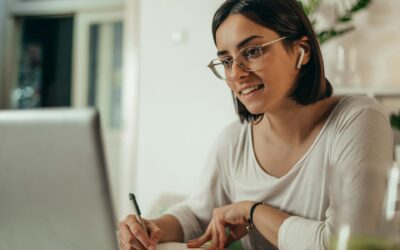|
|
It feels like every couple of weeks we see a new initiative that is designed to attract digital nomads to rural areas by offering cash incentives, preferential housing arrangements, and “authentic” opportunities to rub shoulders with the locals and experience rural life. But how many of these projects have actually been successful at attracting digital nomads?
Let’s look at a few of the success stories and what they are doing right, looking for lessons learned for similar initiatives.
Bansko – Bulgaria
Bansko, a Bulgarian mountain village in the Pirin Mountains, stands out as one of the major success stories. Bulgaria is already a popular destination thanks to its affordable cost of living, and Bankso offers traditional charm where you can still see horse-drawn carts and locals in traditional dress.
But while Bansko offers a slice of the authentic, entrepreneurs have also actively invested in the village to ensure that it is fit for purpose when it comes to welcoming digital nomads. This means plenty of affordable accommodation in co-living style locations, coworking spaces and great connectivity in general throughout the village, and plenty of cafes, restaurants, and other facilities to entertain transient populations with a desire to socialize and expendable income.
Bansko has also been proactive in promoting their digital nomad-friendly village with initiatives like the annual Bansko Nomad Fest, which is an opportunity for digital nomads from around the world to come together, exchange ideas, make new connections, and get to know the joys of Bansko.
All this has resulted in Bansko becoming the most-consistently growing remote work hub of the last fast years, growing 231% in the five years since 2018. It is now home to more than 300 remote workers in any given month and even more during the ski season.
As well as their successful festival, Bansko stands out because it lets digital nomads invest. You can but a one-bedroom apartment in the coliving complex for between €40,000-€70,000, and as well as accessing it when you want, it will be rented out to other digital nomads on your behalf to earn a modest income.
Javea – Spain
While there have been several initiatives to attract digital nomads to the rural parts of Spain, which take advantage of the excellent Spanish digital nomad visa, Javea may be the biggest success story. Set in the heart of the Costa Blanca within Alicante province, it ticks all the boxes when it comes to sun and sea, charming coastal towns, and a slower pace of living.
Its popularity among digital nomads really started in 2015, when Sun and Co. Coliving and Coworking set up shop in the area creating facilities for a digital nomad community looking for a place to live, work, and thrive. The initial coliving and coworking space led to a blossoming of work-friendly cafes and Spanish-language schools. It wasn’t long before there were monthly meetups, regular group hikes, and more to help digital nomads adapt to and make the most of their current home.
Javea generally hosts a community of around 25 digital nomads and remote workers in the high season and 15-20 in the low season. While those numbers might not seem large, it is enough to create a thriving community without compromising everything that is special about the remote community.
Madeira – Portugal
While Madeira may not feel as rural as some of the other options, it has certainly been very successful since opening their digital nomad village on the sleepy cove of Ponta do Sol in February 2021. They welcomed just under 5,000 nomads in the first year, and within two years of opening, they were receiving 11,000 village applicants for the year.
The village is designed for nomads who want to spend a few months enjoying the region. While you must apply for access, you get use of a free coworking space, guidance on finding the best accommodation, and enter the nomad’s Slack group, where all the social action happens.
Nomads can participate in morning yoga sessions, focus in the coworking space, get a pick-me-in the Nomad Coffee Club, join the dog-walking meetup to spend time with animals from the local shelter, join the regular Friday Steak and Sun lunch, join open mic nights, Qigong classes, and more.
Lenk – Switzerland
Lenk, a mountain village in the Swiss Alps, is also emerging as a new favorite among digital nomads as a new hub is developed there. This is an idyllic Swiss village with around 2,500 permanent residents and an increasingly number of nomad residents each season.
Hubs remote workers community is established in Lenk in spring and autumn each year. It’s a unique occasion to explore the Swiss mountains at a fair pricing.
Bovec – Slovenia
One of the newest emerging digital nomad villages is Bovec, which is in the Slovenian Alps. Working on the same model as Lenk, you can book blocks of time during the nomad season to experience this corner of the world alongside likeminded remote workers and travelers.
The next available dates are this winter, between 1 January and 15 April 2025. Get your own private modern fully equipped bedroom and access to a shared kitchen for just €800 per month.
In the winter you will experience a snow-covered landscape and easy access to nearby ski resorts. In the town you will find reliable internet, well-equipped cafes, and a tranquil atmosphere with fresh mountain air.
What Makes a Good Digital Nomad Village?
So, what elements come together to make a successful rural digital nomad hub? It starts with location. It doesn’t have to be specific, such as sun and surf or stunning slopes, but it does have to be somewhere that nature and authentic local lifestyle meets. Bankso gets it right with stunning slopes and rural life, and Javea gets it right with a small and authentic Spanish village on the Mediterranean Sea.
Next is reliable internet, as this is the number one priority for most remote workers, and this can be boosted by digital nomad facilities, such as coworking and coliving spaces. A range of worker-friendly cafes and tourist-friendly restaurants helps as the more places to socialize the better. Working with the local community can often see this happen organically.
Finally, there should be plenty to do. As well as having things like hikes and watersports generally available in the area, many digital nomads appreciate organized programs and social managers that make learning everything the local area has to offer even easier. Often traveling workers are looking for a better work-life balance, so activities such as yoga sessions and afternoon work breaks that re-enforce that can be an attractive prospect.
Finally, awareness is key. The digital nomad community is vibrant and loves to share information, so if a rural hub is doing it right, the word should spread.








